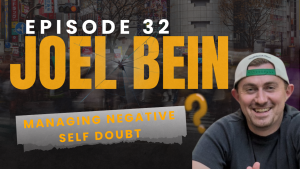Markets fluctuate, political alliances shift, and technologies evolve too quickly for static plans to keep pace. In this climate, authentic leadership cannot be measured by how confidently a leader promises certainty. Instead, it is measured by whether a leader communicates with clarity and honesty. Leaders who adopt adaptive leadership recognize that credibility depends on admitting limits, revising assumptions, and treating people as partners in problem solving. This approach makes building trust the most valuable form of leadership currency.

The Illusion of Certainty in Modern Leadership
For most of the twentieth century, organizations expected leaders to provide certainty. Five year plans, confident financial projections, and authoritative speeches reinforced the idea that executives could control the future. Today, that model no longer holds. Economic disruptions, supply chain volatility, and political realignments continually invalidate rigid forecasts. Leaders who cling to the old model of certainty risk losing legitimacy when predictions fail.
Scholarly research shows that concealing uncertainty undermines credibility. Norman, Avolio, and Luthans (2010) found that when leaders project false confidence, employees quickly recognize the gap between rhetoric and reality, which erodes trust. The illusion of certainty not only fails to reduce anxiety but increases suspicion. Leadership in the modern environment must accept that ambiguity is a structural condition, not an occasional inconvenience.
Transparency as the New Leadership Currency
If certainty cannot be guaranteed, transparency must replace it as the foundation of trust. Transparent leadership means sharing context, explaining tradeoffs, and acknowledging limitations. It involves telling teams not only what decision was made but also why it was made and what constraints shaped the outcome.
Transparency differs from oversharing. Leaders must frame information so that it clarifies rather than confuses. When transparency is practiced well, it strengthens organizational bonds. Norman et al. (2010) demonstrated in a field experiment that transparency combined with authentic positivity significantly increased employees’ willingness to trust their leaders. Kleynhans and colleagues (2022) expanded this finding, showing that authentic leadership behaviors including transparency fostered greater well-being and flourishing among followers. These studies confirm that openness is not merely a moral choice but also a measurable driver of organizational effectiveness.
Building Trust in Uncertain Times
Trust is not built by accurate predictions. It is built by honesty, consistency, and respect. Lansing et al. (2023) documented how trust develops over time in community leadership. They found that when leaders regularly explained their decisions, admitted limitations, and remained consistent in values, trust accumulated even when outcomes were uncertain.
In the workplace, the same principle applies. Employees can accept shifting strategies if they believe their leaders are leveling with them. When information is withheld, employees often fill the void with speculation, which undermines cohesion. When transparency is present, employees are more likely to remain engaged and cooperative, even in turbulent times. Authentic leadership rooted in building trust creates resilience that technical expertise alone cannot provide.
Why Honesty Beats Control
Crisis moments reveal whether leaders rely on control or honesty. During the COVID 19 pandemic, organizations that admitted uncertainty and updated guidance openly maintained stronger morale. By contrast, institutions that projected false stability lost credibility when circumstances forced sudden reversals.
Financial crises offer another example. In 2008, banks that delayed acknowledgment of losses suffered reputational damage, while those that disclosed challenges and recovery plans earlier were more likely to preserve stakeholder trust. The lesson is clear. In crisis management leadership, honesty produces more durable legitimacy than attempts at rigid control.

How Leaders Can Practice Transparency
Authentic leadership can turn transparency into daily practice through several strategies. Leaders should explain the narrative behind data rather than simply presenting numbers. They should admit what they do not know so that employees understand the limits of forecasting. They should tailor communication to different audiences, ensuring consistency of message but adjusting the depth of detail. Leaders should also invite employees into the sensemaking process, providing forums where questions and insights are welcomed.
Once decisions are made, explaining the criteria used fosters accountability and respect. When conditions shift, leaders must acknowledge changes explicitly and explain what prompted them. Finally, leaders should measure trust through surveys and feedback loops, treating trust itself as a performance indicator. When these practices are embedded, transparency becomes part of organizational culture rather than an occasional tactic.
Adaptive, Honest, Human
The future of leadership will be defined by adaptability, humanity, and transparency. Adaptive leadership positions leaders not as architects of fixed strategies but as facilitators of collective navigation. McKimm (2023) argues that adaptive leadership during challenging times depends on open communication, collaborative sensemaking, and honesty about constraints. Without transparency, adaptation appears arbitrary.
Looking toward 2025, organizations will increasingly embed transparency into governance frameworks. Scholars predict that adaptive leadership supported by transparent communication will be necessary for resilience in crises ranging from climate shocks to geopolitical disruptions (Sott, 2025). Authentic leadership that integrates openness, adaptability, and empathy will not only endure but also set the standard for trust in modern organizations.
FAQs
What is transparent leadership?
Transparent leadership is the practice of openly sharing reasoning, context, and uncertainties so that stakeholders understand how decisions are made.
How can leaders build trust during a crisis?
By communicating candidly, updating frequently, and acknowledging uncertainty, leaders preserve credibility and sustain trust even in volatile conditions.
Why is honesty more effective than certainty?
Honesty signals integrity and respect, while false certainty erodes credibility when predictions fail.
Can transparency backfire?
Yes. If leaders provide excessive detail without context, transparency can overwhelm or confuse. Framing and clarity are essential.
How does adaptive leadership relate to transparent leadership?
Adaptive leadership relies on transparent communication to align people with evolving strategies and ensure coherence across shifting conditions.





































